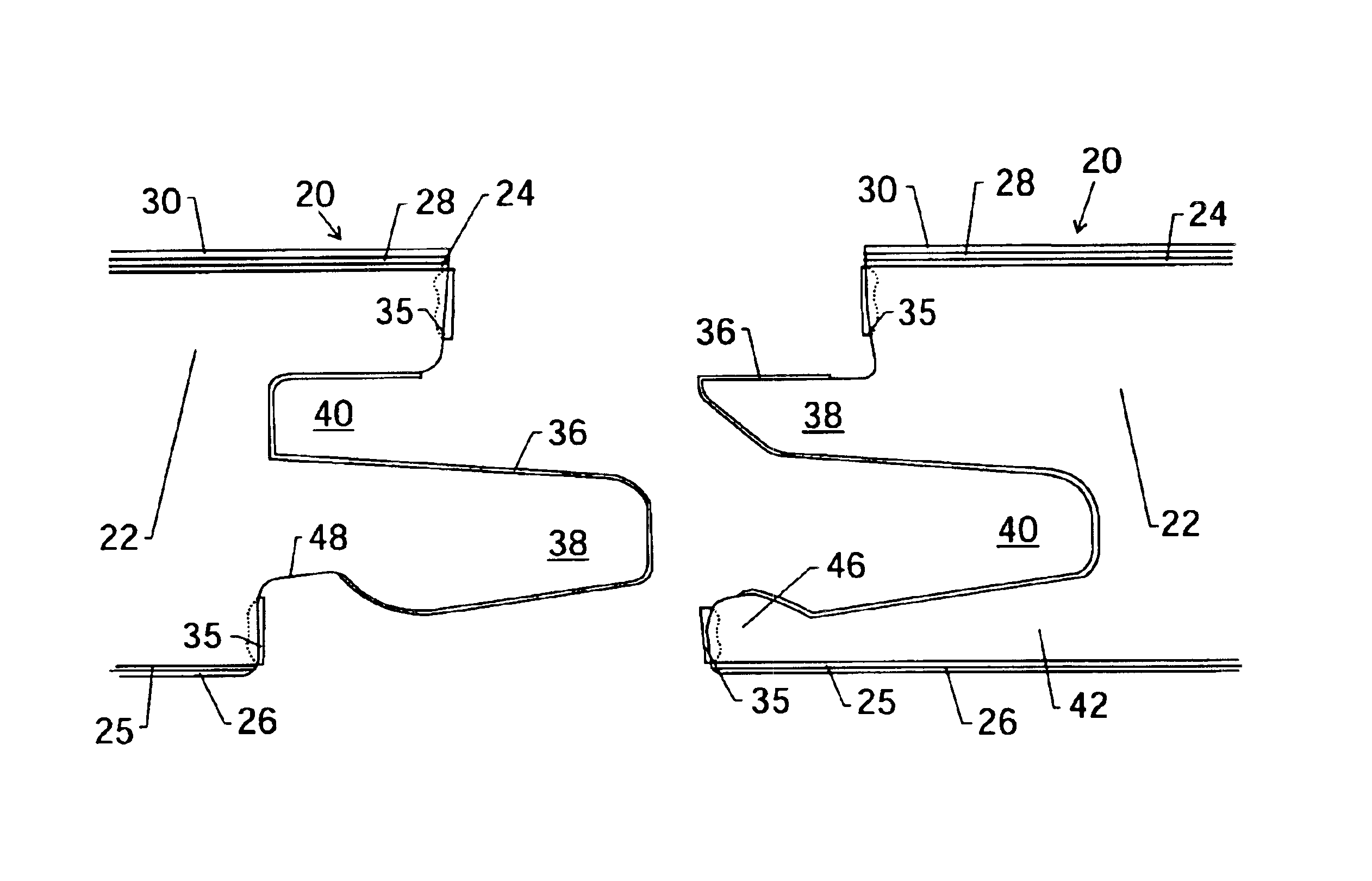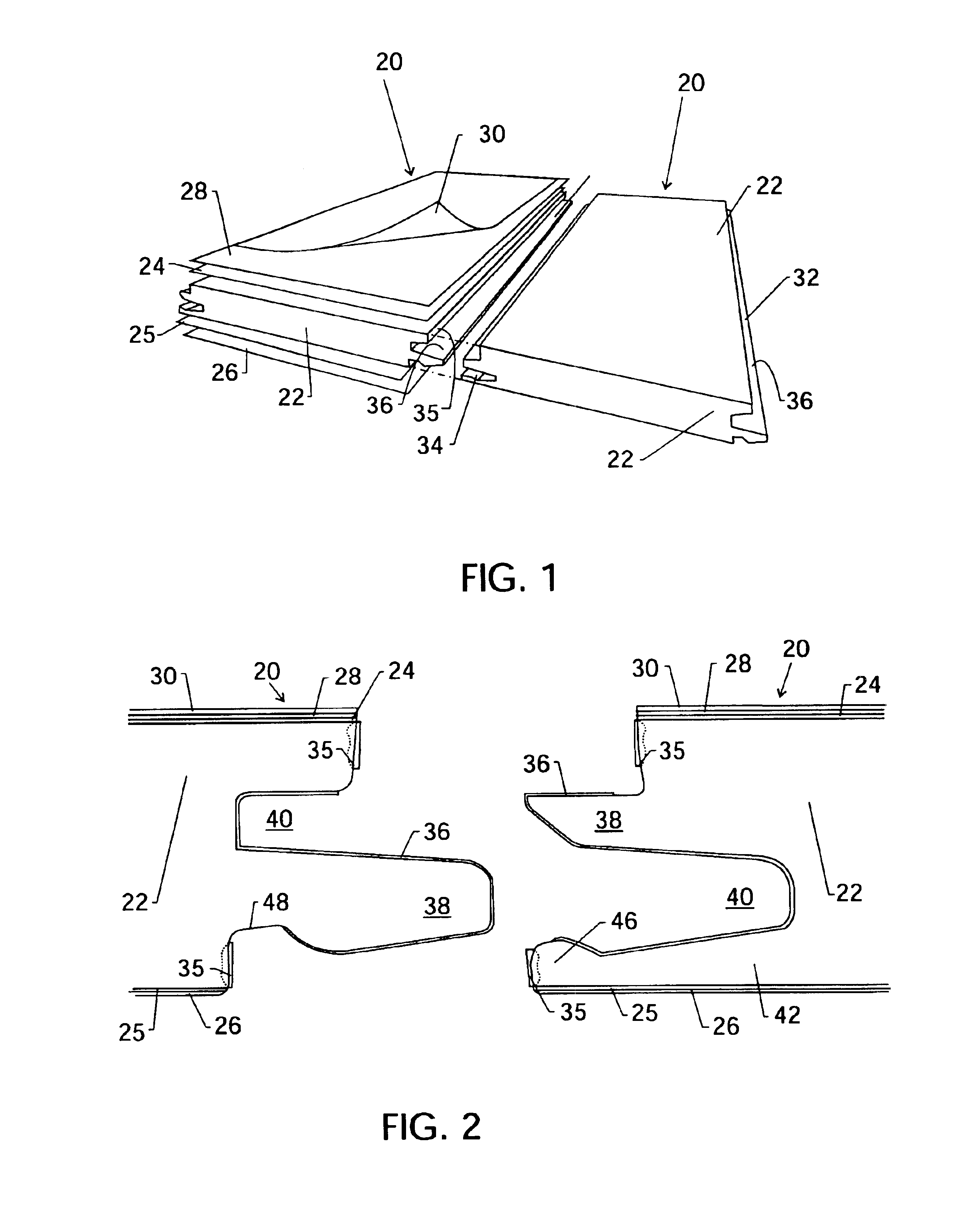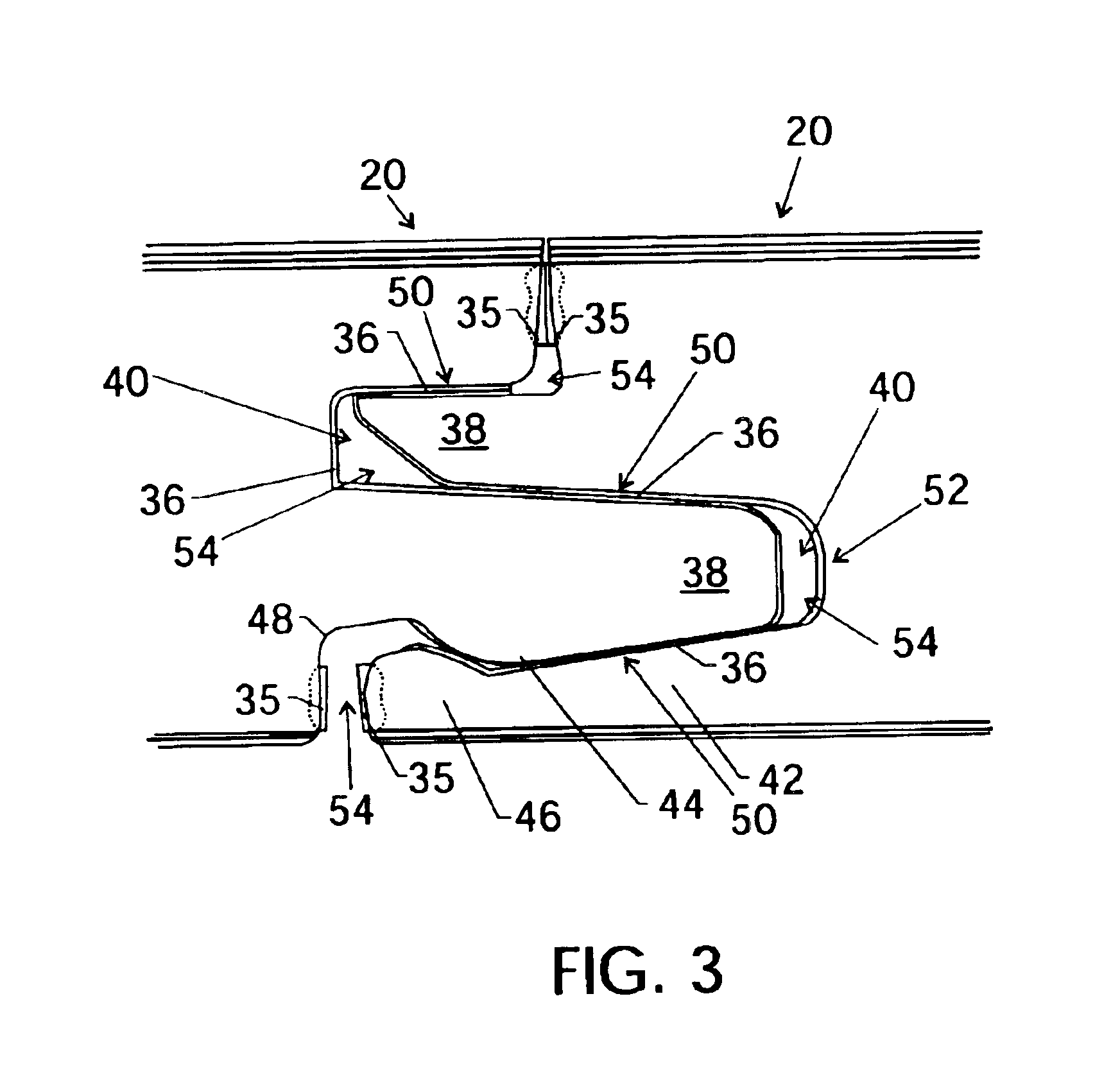Bonded interlocking flooring
a technology of interlocking flooring and bonded wood, which is applied in the field of cohesion bonding of floor panels, can solve the problems of difficult maintenance and relatively high cost of solid wood floors, and the inability to meet the needs of many consumers, and achieves the effect of reducing the number of bonded panels, and improving the stability of the bonding
- Summary
- Abstract
- Description
- Claims
- Application Information
AI Technical Summary
Benefits of technology
Problems solved by technology
Method used
Image
Examples
Embodiment Construction
[0022]Referring generally to FIG. 1, a pair of adjacent laminate wood floor panels 20 are illustrated at a point in time just prior to engagement. It is worth note that although the present technique is described in relation to laminate floor panels, the present technique may be applied to other floor panel modalities as well. For example, the present technique may also be applied to solid hardwood floors. In the exemplary embodiment, the floor panel 20 comprises a wood / resin composite core layer 22. The core layer 22 may be a high-density fiberboard which, advantageously, provides structural integrity to the laminate floor. However, the wood / resin composite may also comprise, for example, medium density fiberboard (MDF), particle board, fiberboard or wood plastic composites. Advantageously, a wood / resin composite core layer 22 is typically significantly less expensive than a solid wood core.
[0023]Disposed directly above and below the core layer 22 may be phenolic treated kraft shee...
PUM
| Property | Measurement | Unit |
|---|---|---|
| pressure | aaaaa | aaaaa |
| pressure | aaaaa | aaaaa |
| time | aaaaa | aaaaa |
Abstract
Description
Claims
Application Information
 Login to View More
Login to View More - R&D
- Intellectual Property
- Life Sciences
- Materials
- Tech Scout
- Unparalleled Data Quality
- Higher Quality Content
- 60% Fewer Hallucinations
Browse by: Latest US Patents, China's latest patents, Technical Efficacy Thesaurus, Application Domain, Technology Topic, Popular Technical Reports.
© 2025 PatSnap. All rights reserved.Legal|Privacy policy|Modern Slavery Act Transparency Statement|Sitemap|About US| Contact US: help@patsnap.com



